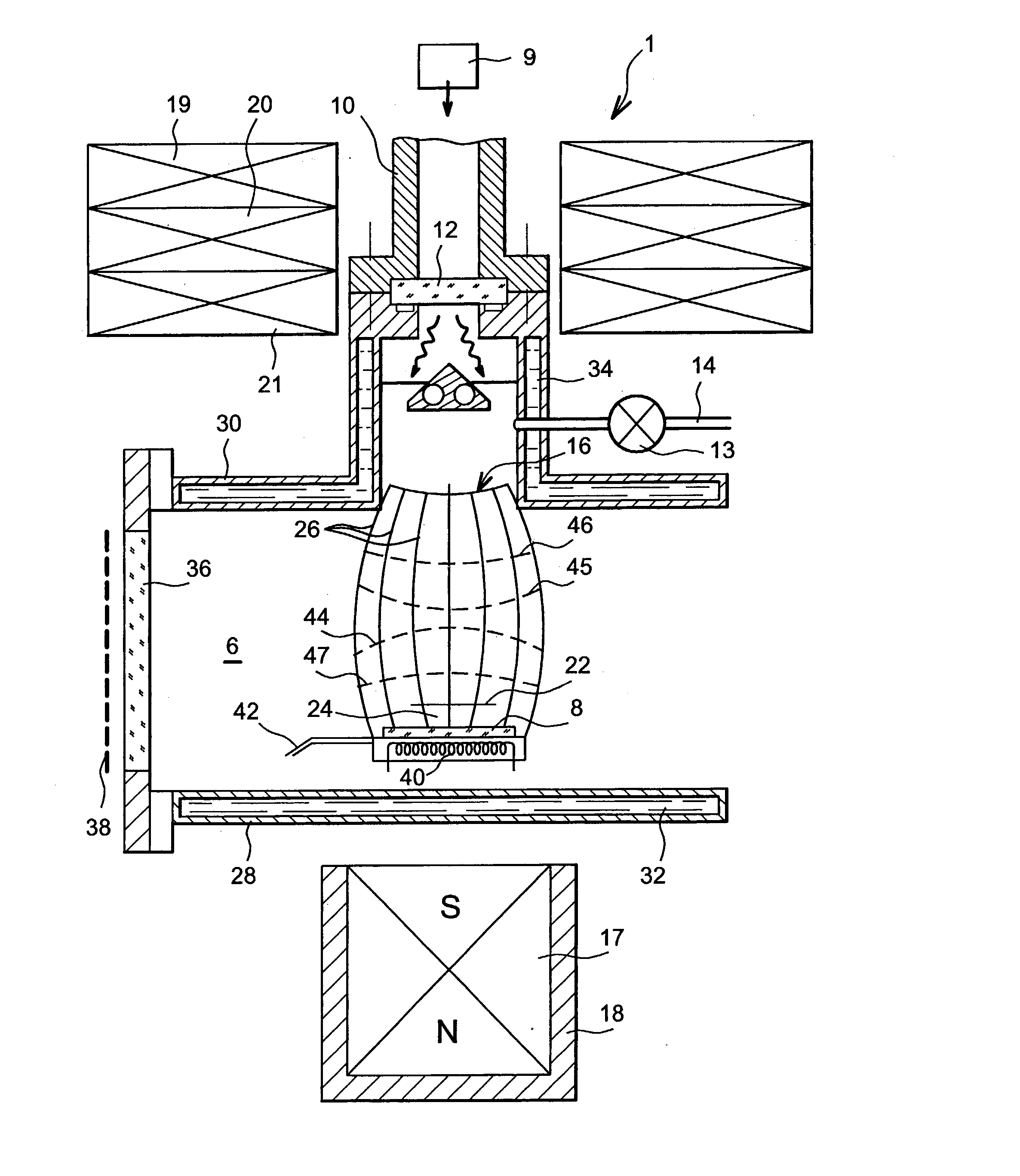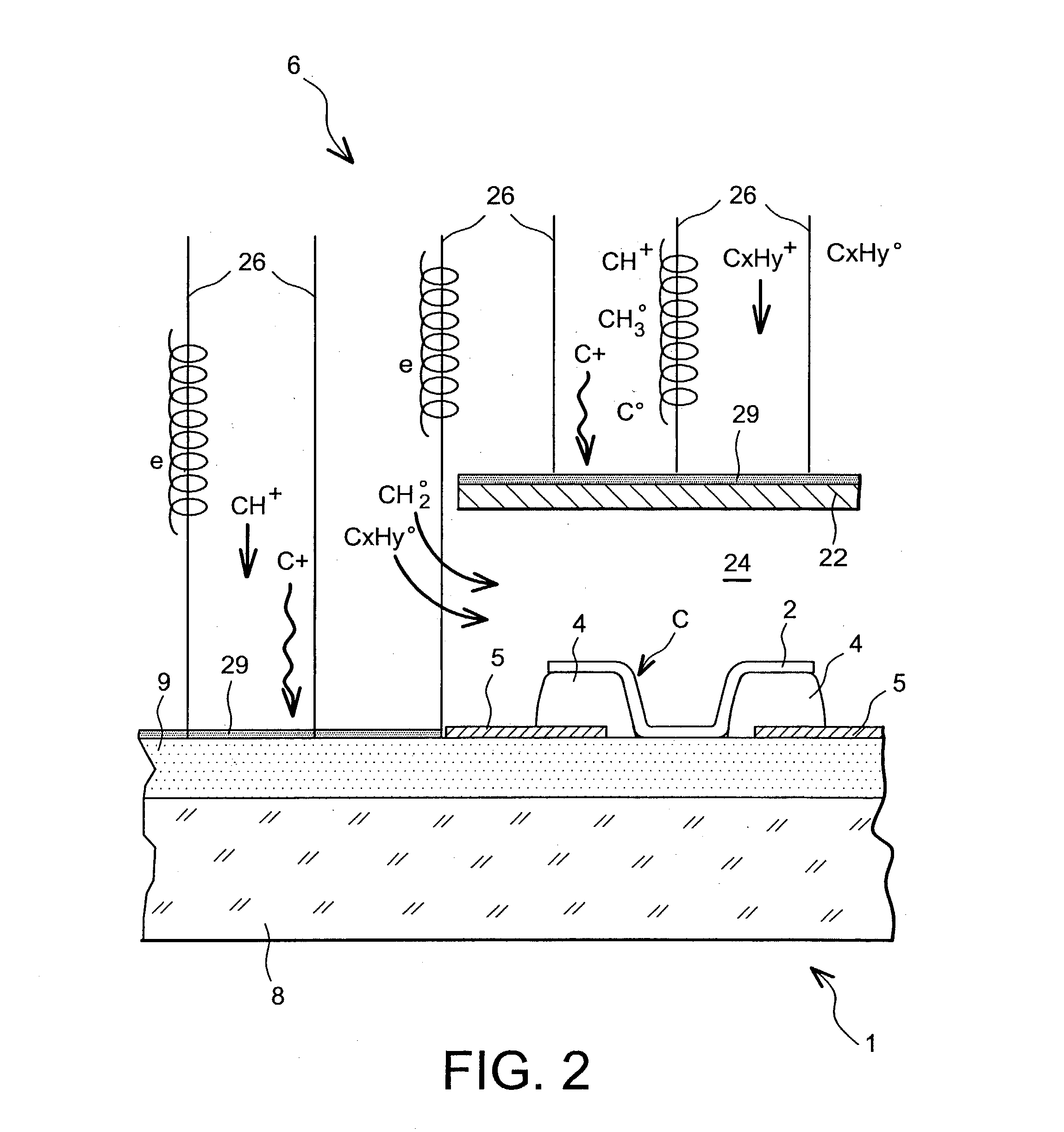Process for making at least one nanotube between two electrically conducting elements and device for implementing such a process
a technology of electrical conductivity and nanotubes, which is applied in the direction of nanoinformatics, crystal growth process, polycrystalline material growth, etc., can solve the problems of incompatibility of proposed method and mass production, complex process type, and still very tedious methods
- Summary
- Abstract
- Description
- Claims
- Application Information
AI Technical Summary
Benefits of technology
Problems solved by technology
Method used
Image
Examples
Embodiment Construction
[0049] FIGS. 1 and 2 show a device 1 for making at least one nanotube between two electrically conducting elements 4, by a plasma at electronic cyclotron resonance. These electrically conducting elements 4 are preferably metallic pins comprising a zone containing at least one element such as iron, nickel, cobalt or any other metal or alloy with catalytic fixation and dehydrogenation properties for CxHy.sup.o type non condensable free radicals.
[0050] Note that each electrically conducting element 4 is positioned on an electrical connection electrode 5.
[0051] Still with reference to FIGS. 1 and 2, the device 1 comprises a deposition chamber 6 inside which there is a substrate 8, preferably made of silicon, comprising an insulating layer 9 preferably made of SiO.sub.2. The electrodes 5 and several electrically conducting elements, including the two elements 4 that are to be connected, are supported on this insulating layer 9.
[0052] The deposition chamber 6 is partially delimited by dou...
PUM
| Property | Measurement | Unit |
|---|---|---|
| temperature | aaaaa | aaaaa |
| temperature | aaaaa | aaaaa |
| frequency | aaaaa | aaaaa |
Abstract
Description
Claims
Application Information
 Login to View More
Login to View More - R&D
- Intellectual Property
- Life Sciences
- Materials
- Tech Scout
- Unparalleled Data Quality
- Higher Quality Content
- 60% Fewer Hallucinations
Browse by: Latest US Patents, China's latest patents, Technical Efficacy Thesaurus, Application Domain, Technology Topic, Popular Technical Reports.
© 2025 PatSnap. All rights reserved.Legal|Privacy policy|Modern Slavery Act Transparency Statement|Sitemap|About US| Contact US: help@patsnap.com



